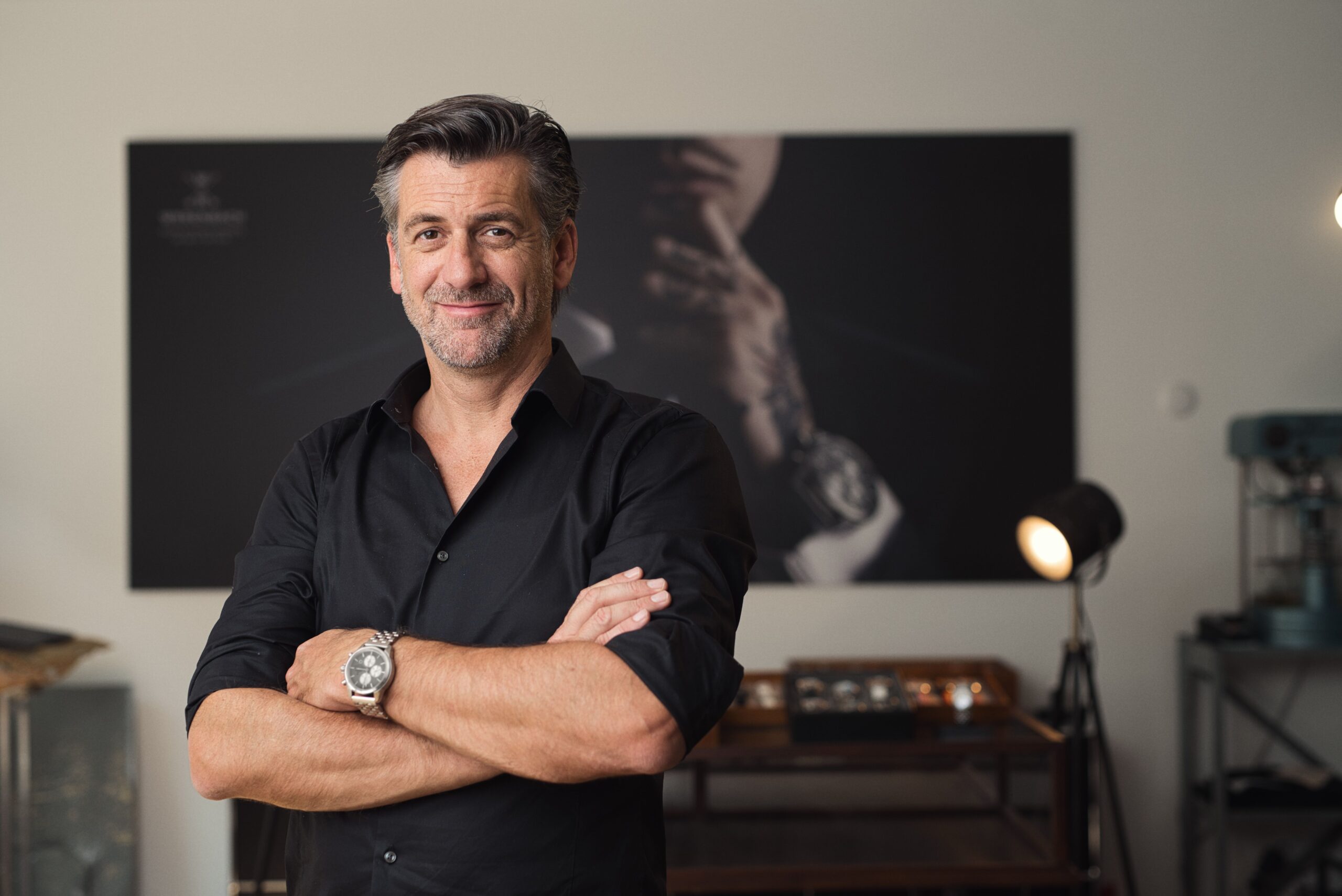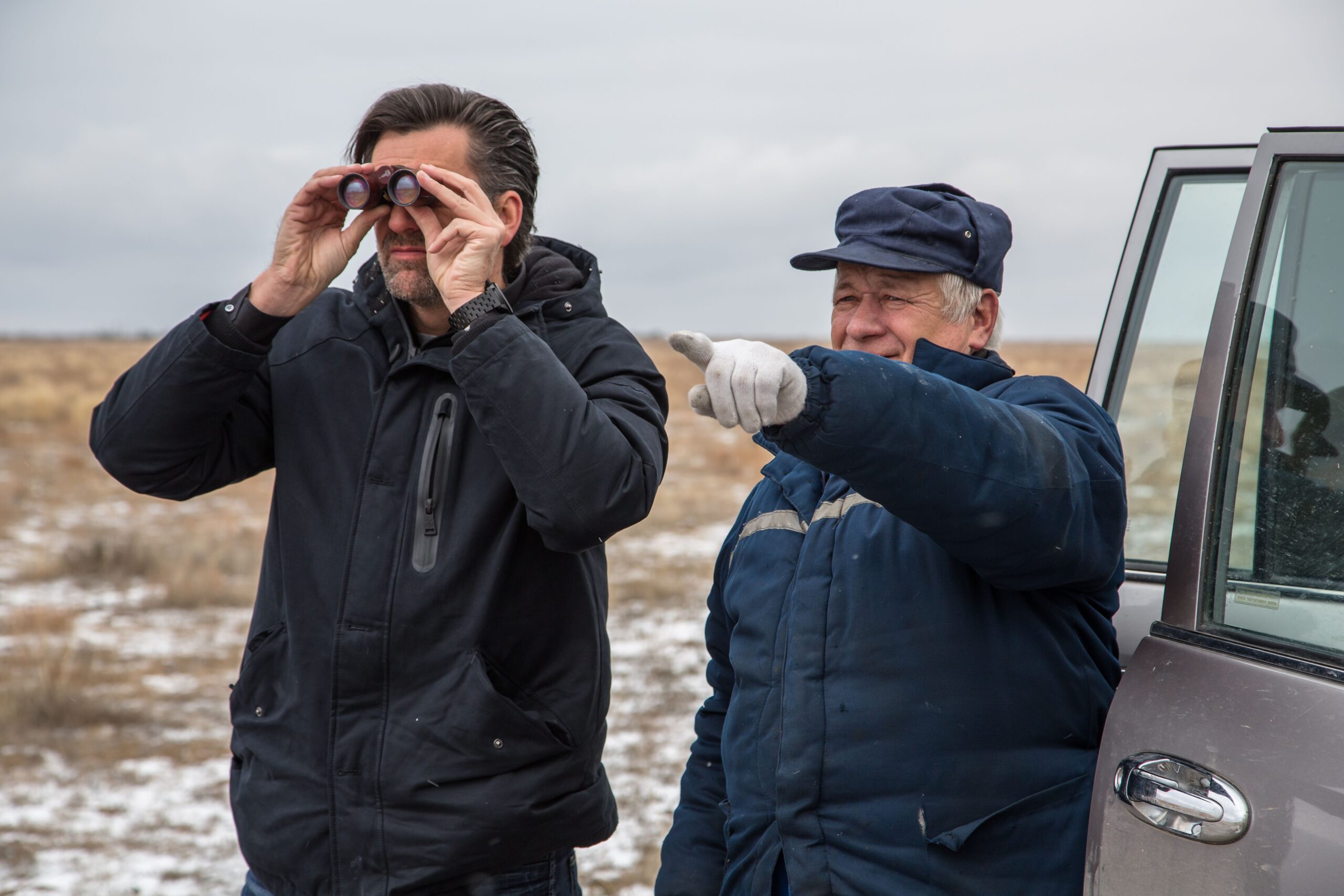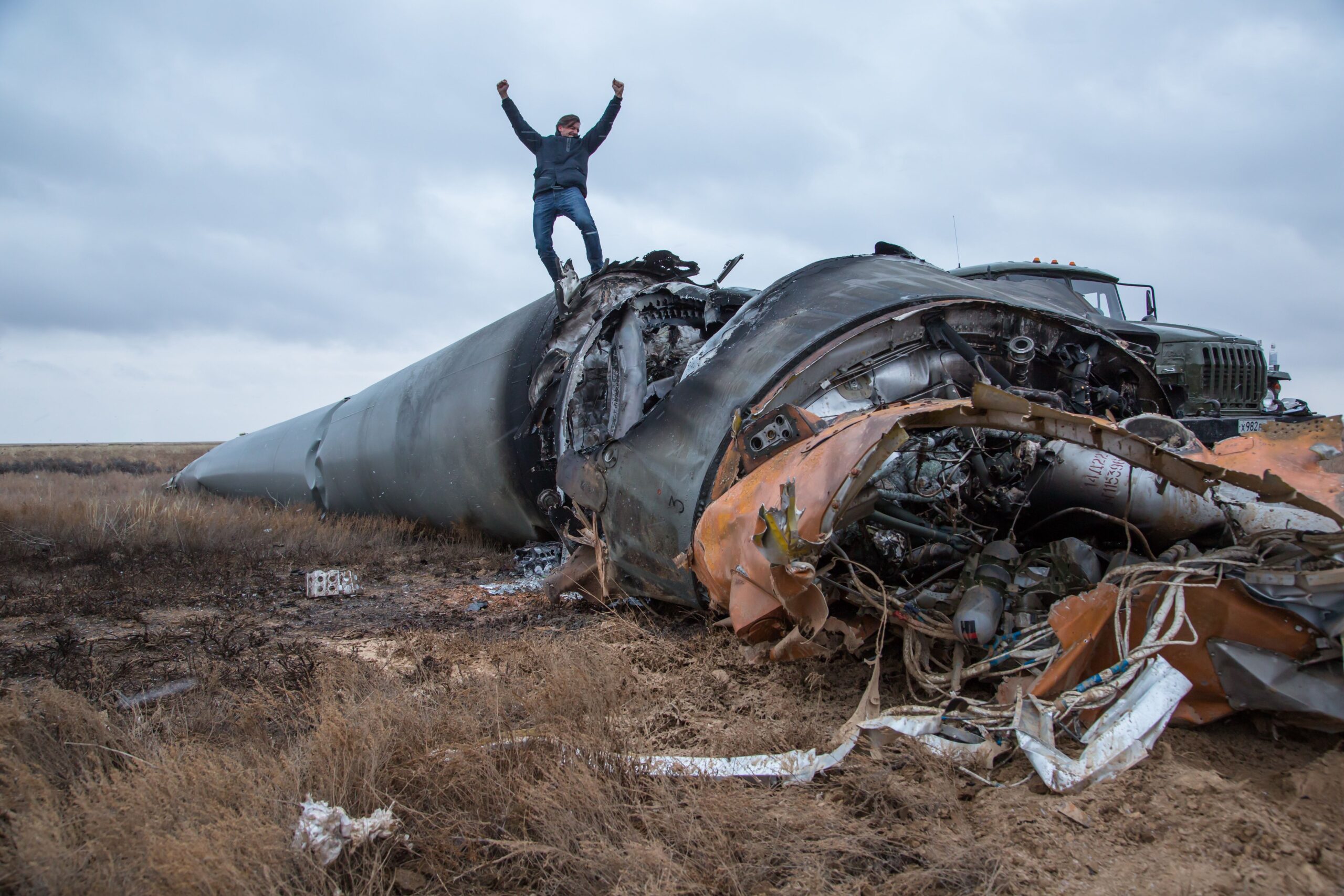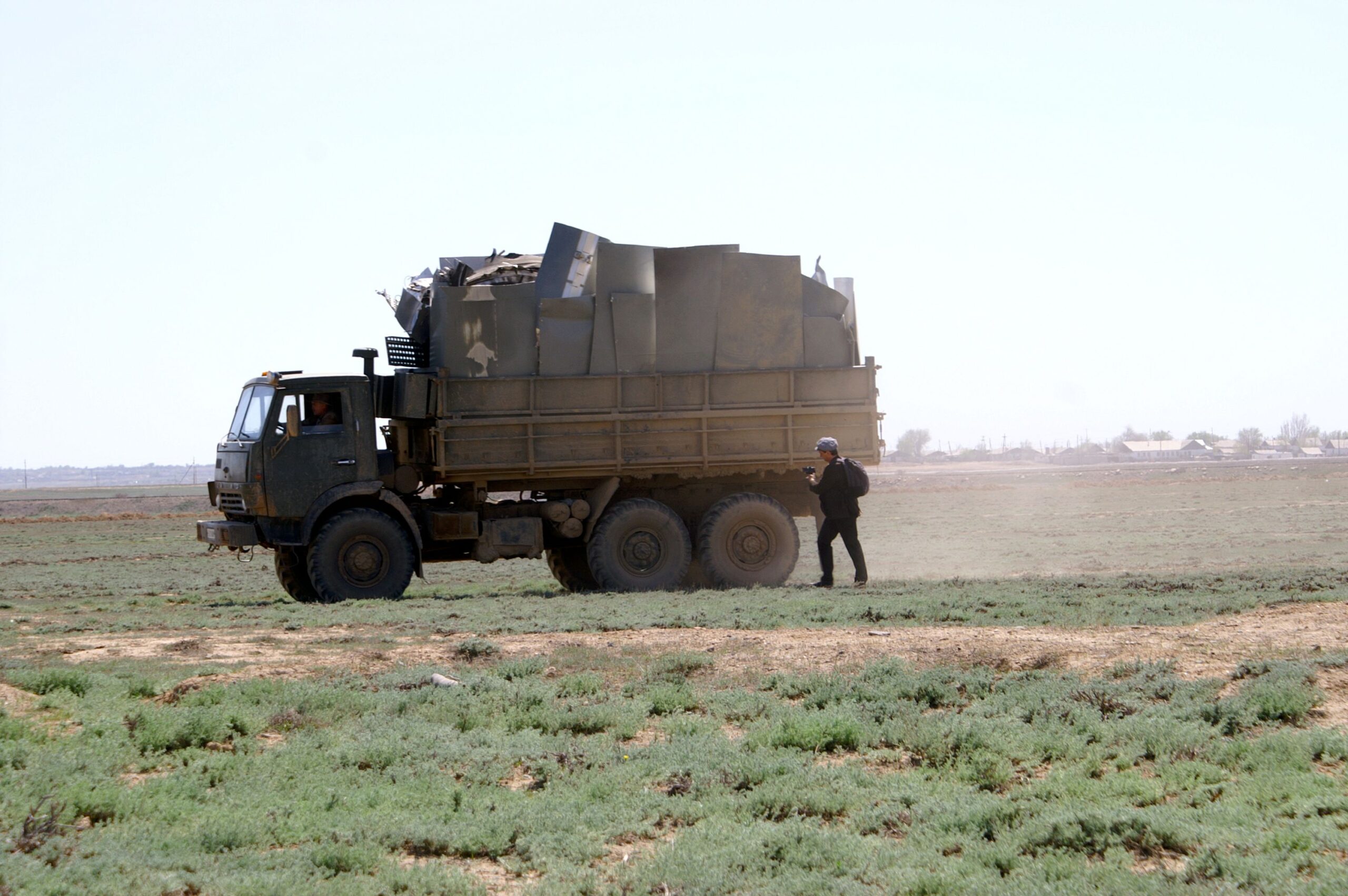ZURICH – Few would consider space rocket debris to be of any value. Yet for a Swiss watchmaker, this debris found in the Kazakh steppes turned out to be of use. In an interview with The Astana Times, Patrick Hohmann, founder and Managing Director of Werenbach, shared his story of creating spaceborne timepieces.

Patrick Hohmann.
Hohmann was initially inspired by the wristwear of American astronaut Neil Armstrong, the first man to step on the moon. He wore the Omega Speedmaster Moonwatch, which the National Aeronautics and Space Administration (NASA) gave him for use during the Apollo 11 mission in 1969.
“This watch became legendary because Neil Armstrong wore it on the moon. I was jogging in the forest and thinking about it. This was when I got the idea to make a watch directly out of a space rocket. I could not let this idea go,” he said.
The “Space tourists” documentary by Swiss filmmaker Christian Frei became a crucial determinant of the Werenbach company’s future and its bond with Kazakhstan.

Hohmann in the Werenach atelier in the Swiss city of Zurich. Photo credit: Hohmann’s archive.
“There was little information at the very beginning. The moment of breakthrough came when I discovered a documentary about space tourists, who visited the Kazakh steppe to collect rocket materials. I reached out to the filmmaker and the producer. Together with the producer, we went to Kazakhstan,” said Hohmann.
The first trip took place in 2012. “I was so thrilled to go to Kazakhstan. It was a huge adventure. We really had no idea what to expect,” he noted.
The decision to visit the largest land-locked country in the world was made for a reason.

Hohmann in Kazakhstan. Photo credit: Hohmann’s archive.
On their way to reach outer space, rockets pass three stages. The first stage begins at an altitude of 46 to 85 kilometers, the second – at 169 kilometers, and the third – at 207 kilometers. The burned-out materials fall back to earth, usually into the water. But Kazakhstan is an exception – the space rocket debris falls back on land, on the outskirts of the Kazakh city of Zhezkazgan in the Ulytau Region.
“The rocket debris falls back in a dangerous military restricted area. There is always a chance that the rocket part can fall on your head. I will never forget how we arrived at the same time as the Soyuz MS-02 spacecraft was launched at the Baikonur cosmodrome. When we heard the booster’s bang coming from an altitude of 45 kilometers our adrenaline started to boil. The moment we finally found the booster was breathtaking,” he said.
The material comes from the manned Soyuz space rockets, the vehicles for human space missions. They are launched from the Baikonur Cosmodrome, the world’s first and largest operational space launch facility. It is located in Kazakhstan’s Kyzylorda Region.

The space rocket debris in the Kazakh steppes. Photo credit: Hohmann’s archive.
“The Soyuz rocket is the most legendary rocket of all time. The spacecraft launched Sputnik, the world’s first artificial satellite. It also took the first man into space,” said Hohmann.
“I had a big dream of creating watches out of materials from all space nations, including the United States, China, and Japan. But this turned out to be so complicated that I had to let that idea go,” he added.
Every watch has the name of a rocket mission written on the back side. “You can enter the name of the mission in YouTube to see the launch of the rocket from which your watch is made,” he said.
The models’ dials are made from either the rocket booster (the engine) or the rocket fairing (the nose cone). The color and burn marks indicate which part of the rocket the material comes from.

The launch of the Soyuz rocket. Photo credit: Hohmann’s archive.
“The dials of the watches match the color of the rocket part. It means they are either orange, white, or silver green. At the very beginning, we started with the rocket engine. Then we came up with the idea of putting the original material from the booster directly into the watch. Therefore, we developed our own design DNA,” Hohmann said.
The company’s exclusivity is rooted in an astronaut-inspired ideology called the “overview effect,” first proposed by American space philosopher Frank White. It is a cognitive shift that happens when viewing the earth first-hand from space. This experience profoundly affects space travelers’ view of life.
“I read a lot about astrophysics. My concept was to combine my watches with a spaceborne ideology. ‘Spaceborne’ means to think like an astronaut. They are much more modest. Once astronauts reach space, they look back at Earth and realize that we live on one planet, representing just a small grain among many people. If I could, I would go to space tomorrow,” said Hohhman.
Showing his first-ever watch, Hohmann said it was made from the melted rocket engine. “It was insane to produce the first watch. It took a year and a half. When you start from scratch, you have to develop the design and establish the production method. Just the production of the components takes four months. However, I was very proud of my first result.”

The collection of space rocket debris in the Kazakh city of Zhezkazgan in the Ulytau Region. Photo credit: Hohmann’s archive.
Since 2012, Hohmann has been to the Kazakh cities of Astana, Almaty, Karagandy, and Zhezkazgan. His last journey to Kazakhstan took place two years ago.
The space-rocket materials are transferred from Kazakhstan to Switzerland by truck. Upon reaching the destination, they are stored in the Waldhaus mountain area. “I have huge parts that would not fit into that place,” he noted, speaking about the Zurich-based atelier.
Over the past 11 years, Werenbach has developed its own network of partners, suppliers, and freelancers, selling nearly 1,500 watches online per year. According to Hohmann, most of his customers are from Germany and Switzerland. He sells the products worldwide, particularly in the United States, Sweden, and Korea. However, few people in Kazakhstan and the Eurasian region know about a journey that starts from space and ends with the creation of these Swiss watches.

